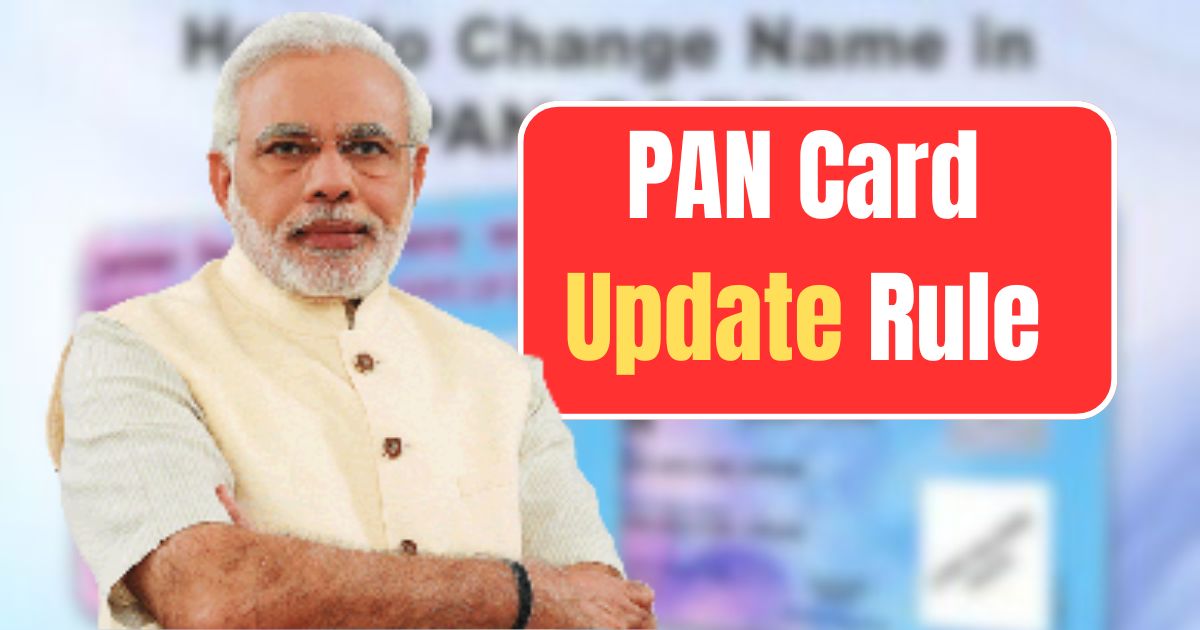Just think about it: You are in full swing for that home loan and suddenly face a problem just because your PAN is stating an address that has not been used for ten years. It is very annoying, right? In the rapid-changing digital India, the PAN card has become the financial passport besides being a tax ID. However, it is expected that non-compliance with the updates will result in huge losses due to the countdown that would begin in 2025. Learn the process of PAN updates and stay ahead of the curve!
The 2025 Game-Changer: Aadhaar Enters the Chat
Brace yourself; July 1, 2025, is a date that will be remembered in history. The Central Board of Direct Taxes (CBDT) has now made it compulsory to use Aadhaar for each new PAN application, which means no biometrics and no fakes. This stoppage of tax evasion, where areas with tax-fraud always got access to many PANs, is also indirectly supported. Old PAN holders will have until December 31, 2025 to link their Aadhaar; otherwise, they will not be able to use their PAN starting January 2026—think about their frozen refunds and pending tax returns.
Master the Update
Do you want to update your records? Then, start with the Income Tax e-filing or Protean/NSDL websites—it’s an online affair first and foremost for quicker processing. Fill out either Form 49A (Indians) or Form 49AA (NRIs), upload your evidence such as Aadhaar for identity/address/DOB, and take a new photo. Payment is done digitally—keep track of the receipt number, and voilà—your e-PAN will be sent to your email in a few days; the physical one will arrive within 15-20 days. If you decide to go offline, a visit to a TIN-Facilitation Center will be required, but digital is more affluent and quicker. For PAN 2.0, choose the option during your application; it’s simply no extra burden. NRIs using Indian addresses for dispatch will not only save costs but also have the advantage of prompt delivery. And just like that, you are updated and unstoppable!
Fees Unpacked
Nothing to worry about—the fees will remain easy to pay but will differ according to the payment method and place. Indian applicants’ cards that are issued physically through centers cost a total of ₹107 (comprising ₹93 processing + GST), and in the case of only e-PAN, the fee is reduced to ₹72. For dispatching abroad, an additional fee of ₹910 will be charged making it a total of ₹1,017. Reprint on changes? Just pay ₹50 in India and ₹959 abroad. Corrections cost the same as new PAN issuance. Online payment through portals costs ₹10-20 less compared to using net banking. No hidden traps here—one time payment gives you peace of mind.
| Update Type | India Fee (₹) | Overseas Fee (₹) | Timeline |
|---|---|---|---|
| New/Change (Physical) | 107 | 1,017 | 15-20 days |
| e-PAN Only | 72 | 72 | Instant-2 days |
| Reprint (No Change) | 50 | 959 | 10-15 days |
| PAN 2.0 Upgrade | 0 | 0 | With next update |
Penalty Pitfalls
Are you ignoring the linking of Aadhaar? Starting 2026, unlinked PANs will not allow high-value transactions to be executed—for instance, loans above ₹50,000 or property purchases. A fine of ₹10,000 will be charged for non-compliance as per CBDT’s anti-evasion plan. But compliance is a lot easier than that: Link on the e-filing site using an OTP—max five minutes. Keep receiving quarterly reminders through SMS. NRIs can install the NSDL app for hassle-free global access. Keep your alertness level high; just one click can save you from chaos.
Wrap-Up
In 2025’s rulebook, an elegant PAN is no longer an option—it is your advantage in the Indian economy that is growing. From Aadhaar mandates to QR revolutions, these tweaks promise security and simplicity. Update today, avoid penalties, and let your finances thrive. Any doubts? The e-filing portal is your partner. Here’s wishing you a smooth fiscal year—congratulations on making smart moves!
Also Read: EPFO Pension Update 2025: Key Changes & What Pensioners Should Know
